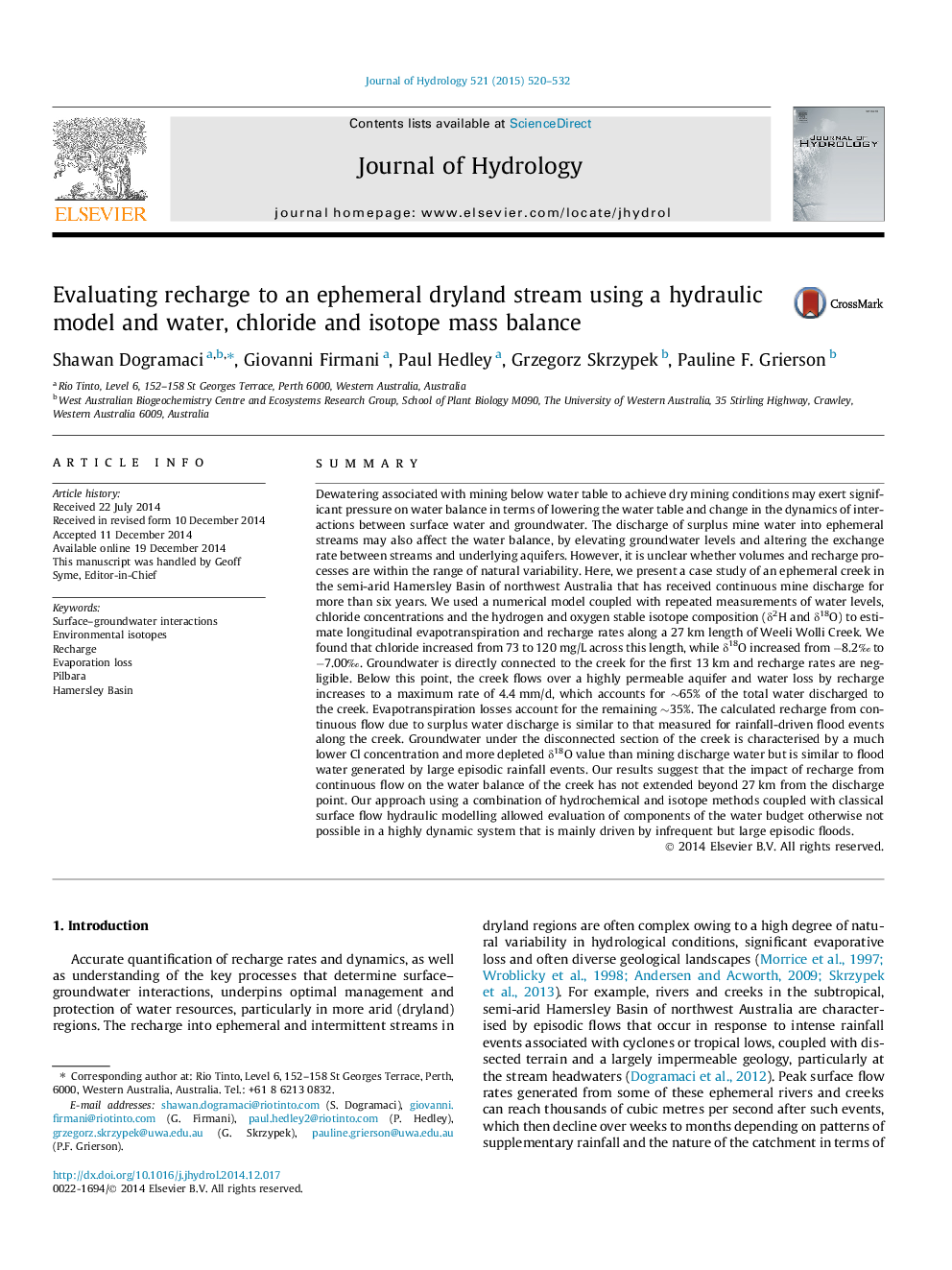| کد مقاله | کد نشریه | سال انتشار | مقاله انگلیسی | نسخه تمام متن |
|---|---|---|---|---|
| 6411623 | 1629929 | 2015 | 13 صفحه PDF | دانلود رایگان |
- An ephemeral creek in the semi-arid Australia received mine discharge for >6 years.
- Numerical modelling, Cl and isotope mass balance were used to assess impact.
- Cl increased from 73 to 120 mg/L and δ18O from â8.2â° to â7.0â° along the creek.
- Water loss by recharge accounts for â¼65% and evapotranspiration by â¼35%.
- Combined multi-method approach allowed successful calculation of water budget.
SummaryDewatering associated with mining below water table to achieve dry mining conditions may exert significant pressure on water balance in terms of lowering the water table and change in the dynamics of interactions between surface water and groundwater. The discharge of surplus mine water into ephemeral streams may also affect the water balance, by elevating groundwater levels and altering the exchange rate between streams and underlying aquifers. However, it is unclear whether volumes and recharge processes are within the range of natural variability. Here, we present a case study of an ephemeral creek in the semi-arid Hamersley Basin of northwest Australia that has received continuous mine discharge for more than six years. We used a numerical model coupled with repeated measurements of water levels, chloride concentrations and the hydrogen and oxygen stable isotope composition (δ2H and δ18O) to estimate longitudinal evapotranspiration and recharge rates along a 27 km length of Weeli Wolli Creek. We found that chloride increased from 73 to 120 mg/L across this length, while δ18O increased from â8.2â° to â7.00â°. Groundwater is directly connected to the creek for the first 13 km and recharge rates are negligible. Below this point, the creek flows over a highly permeable aquifer and water loss by recharge increases to a maximum rate of 4.4 mm/d, which accounts for â¼65% of the total water discharged to the creek. Evapotranspiration losses account for the remaining â¼35%. The calculated recharge from continuous flow due to surplus water discharge is similar to that measured for rainfall-driven flood events along the creek. Groundwater under the disconnected section of the creek is characterised by a much lower Cl concentration and more depleted δ18O value than mining discharge water but is similar to flood water generated by large episodic rainfall events. Our results suggest that the impact of recharge from continuous flow on the water balance of the creek has not extended beyond 27 km from the discharge point. Our approach using a combination of hydrochemical and isotope methods coupled with classical surface flow hydraulic modelling allowed evaluation of components of the water budget otherwise not possible in a highly dynamic system that is mainly driven by infrequent but large episodic floods.
Journal: Journal of Hydrology - Volume 521, February 2015, Pages 520-532
